Introduction
The CoQA dataset (Reddy et al., 2019) introduces conversational dynamics to question answering research. Unlike previous datasets that focus on isolated question-answer pairs, CoQA requires models to maintain context across multi-turn conversations while reading and reasoning about text passages.
This dataset addresses a gap in conversational AI research by providing a benchmark for systems that must understand dialogue flow and implicit references (key components of natural human conversation).
For related work on conversational question answering, see my analysis of QuAC.
What Makes Conversational QA Different
Conversational question answering introduces challenges beyond traditional reading comprehension:
- Context dependency: Questions rely on previous dialogue turns for meaning
- Coreference resolution: Understanding pronouns and implicit references
- Abstractive answering: Rephrasing information rather than extracting exact text spans
- Multi-turn reasoning: Maintaining coherent dialogue across multiple exchanges
These requirements differentiate CoQA from existing question answering datasets, which typically treat each question independently.
Why CoQA Matters
Question answering systems typically excel at finding specific information in text but struggle with natural conversation. Human communication involves building on previous exchanges, using pronouns and implicit references, and expressing ideas in varied ways.
CoQA addresses this by creating a large-scale dataset for conversational question answering with three primary characteristics:
Conversation-dependent questions: After the first question, every subsequent question depends on dialogue history across 127,000 questions spanning 8,000 conversations
Natural, abstractive answers: Rather than extracting exact text spans, CoQA requires rephrased responses that sound natural in conversation
Domain diversity: Training covers 5 domains with testing on 7 domains, including 2 unseen during training
The performance gap is notable: humans achieve 88.8% F1 score while the best models at the time reached 65.1% F1, indicating substantial room for improvement.
Dataset Construction
CoQA was constructed using Amazon Mechanical Turk, pairing workers in a question-answer dialogue setup. One worker asked questions about a given passage while another provided answers. The answerer first highlighted the relevant text span, then rephrased the information using different words to create natural, abstractive responses.
This methodology produces answers that sound conversational rather than extracted, making the dataset more realistic for dialogue applications.
Domain Coverage
CoQA spans diverse text types to ensure evaluation across different writing styles and topics:
Training domains (5):
- Children’s stories from MCTest
- Literature from Project Gutenberg
- Educational content from RACE (middle/high school English)
- CNN news articles
- Wikipedia articles
Test-only domains (2):
- Science articles from AI2 Science Questions
- Creative writing from Reddit WritingPrompts
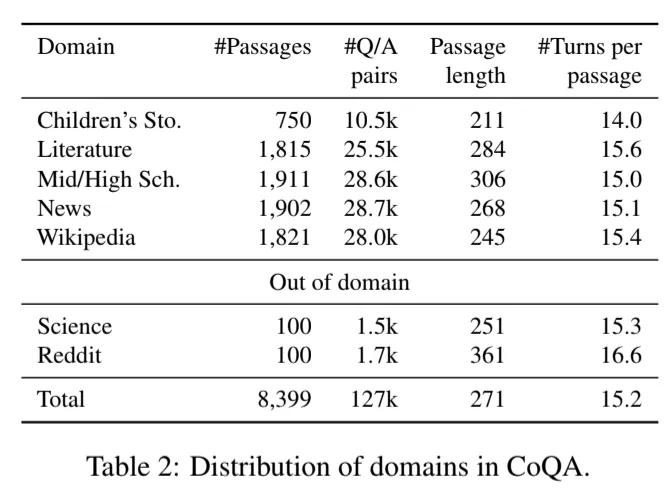
The inclusion of test-only domains provides a rigorous evaluation of model generalization to unseen text types.
Comparison with Existing Datasets
Prior to CoQA, the dominant question answering benchmark was SQuAD (Stanford Question Answering Dataset). While SQuAD established foundations for reading comprehension, it had limitations:
- SQuAD 1.0: 100,000+ questions requiring exact text extraction from Wikipedia passages
- SQuAD 2.0: Added 50,000+ unanswerable questions to test when no answer exists
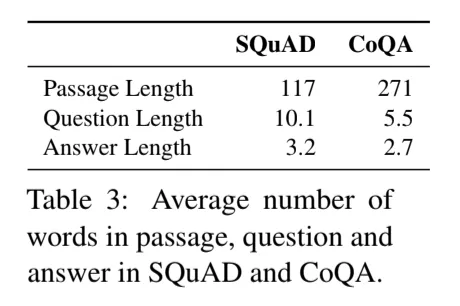
SQuAD treats each question independently and requires only extractive answers, limitations that CoQA addresses through conversational context and abstractive responses.
Question and Answer Analysis
The differences between SQuAD and CoQA extend beyond conversational context:
Question diversity: SQuAD heavily favors “what” questions (~50%), while CoQA shows a more balanced distribution across question types, reflecting natural conversation patterns.
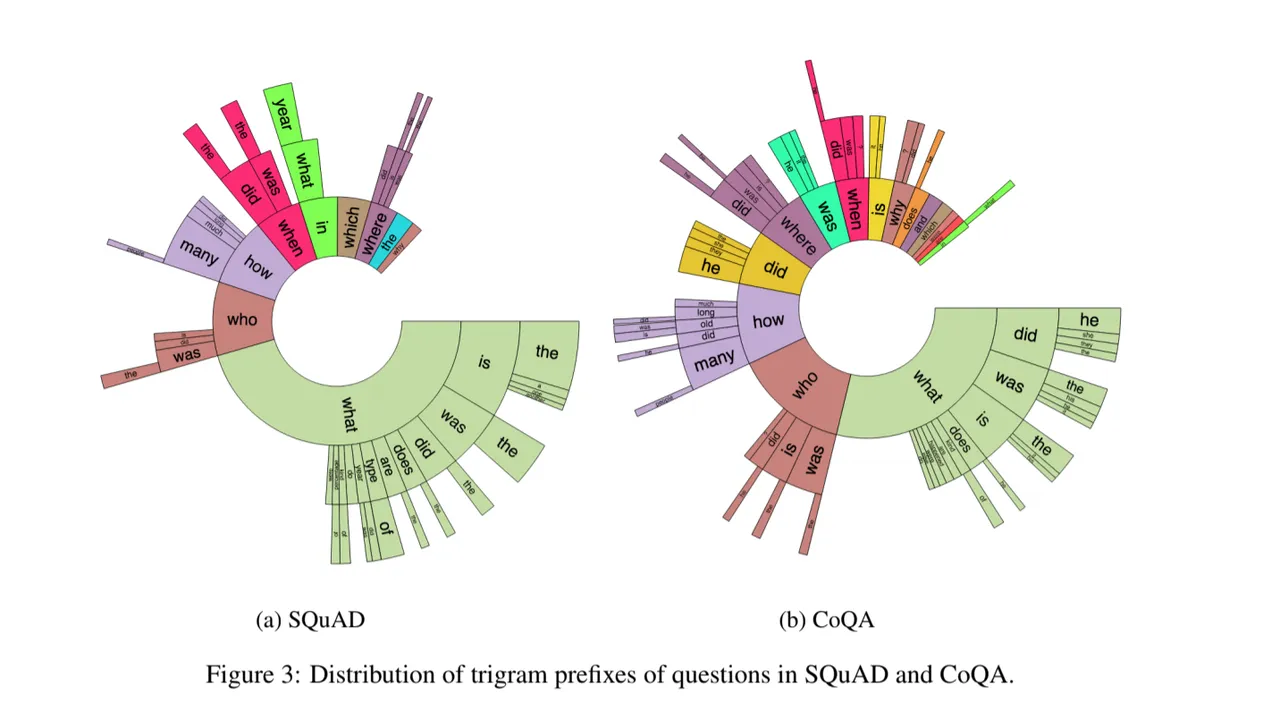
Context dependence: CoQA includes challenging single-word questions like “who?”, “where?”, or “why?” that depend entirely on dialogue history.
Answer characteristics: CoQA answers vary more in length and style compared to SQuAD’s primarily extractive spans.
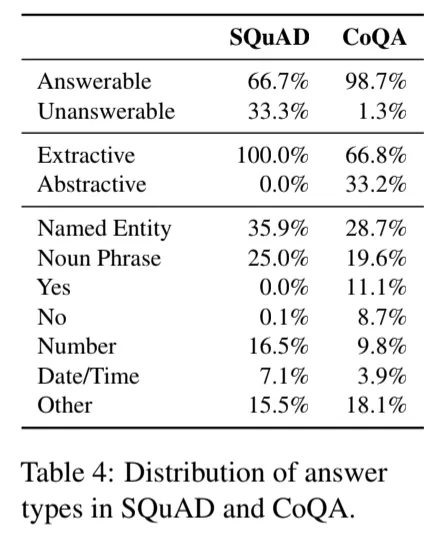
The Coreference Challenge
CoQA’s difficulty stems largely from its reliance on coreference resolution (determining when different expressions refer to the same entity). This remains a challenging research problem in NLP.
Coreference types in CoQA:
- Explicit coreferences (~50% of questions): Clear indicators like pronouns (“him,” “it,” “her,” “that”)
- Implicit coreferences (~20% of questions): Context-dependent references requiring inference (e.g., asking “where?” without specifying what)
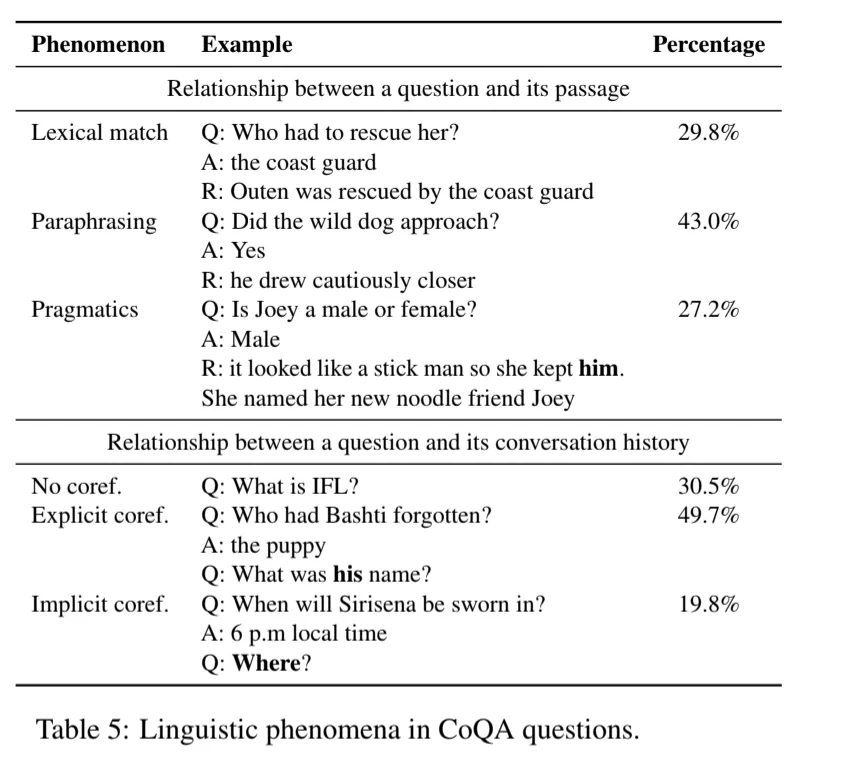
These linguistic phenomena make CoQA more difficult than traditional reading comprehension, as models must resolve references across dialogue turns while maintaining conversational coherence.
Performance Benchmarks
Models faced significant challenges on CoQA, with substantial room for improvement:
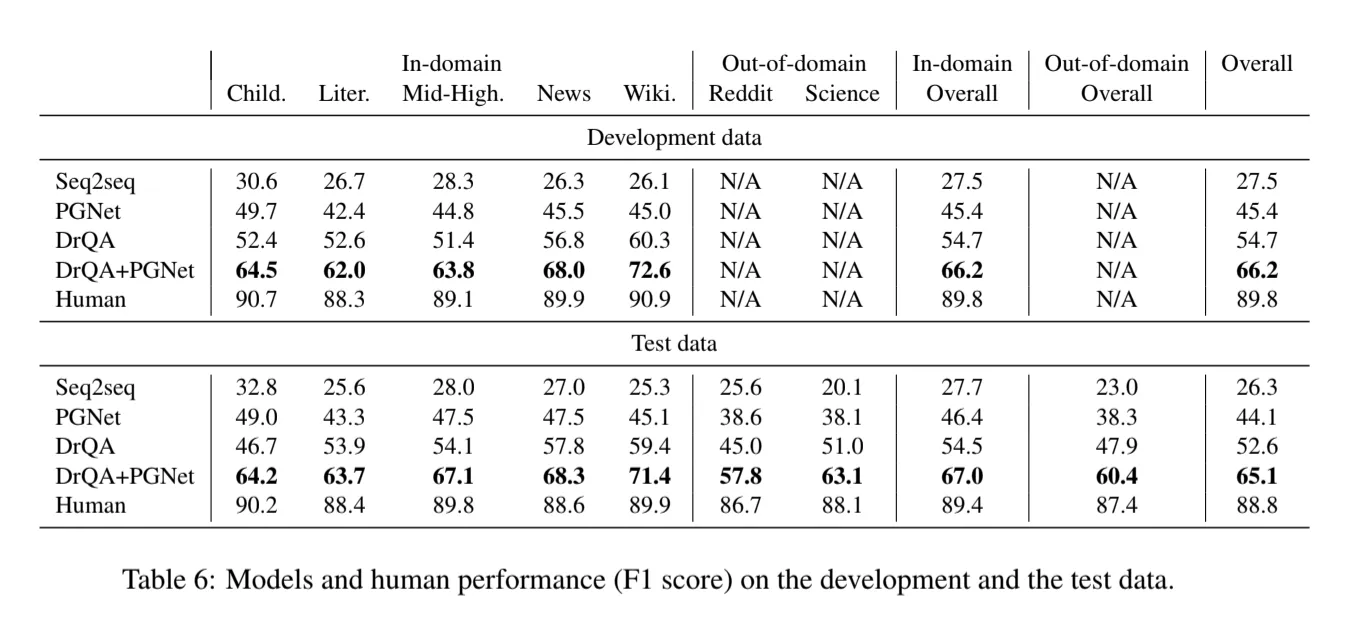
The performance gap between human and machine capabilities highlighted conversational question answering as a challenging frontier in NLP research.
Research Impact and Future Directions
CoQA represents a step toward more natural conversational AI systems. By requiring models to handle dialogue context, coreference resolution, and abstractive reasoning simultaneously, it challenges current NLP system capabilities.
The dataset’s leaderboard provides a benchmark for measuring progress on this task. As models improve on CoQA, we can expect advances in conversational AI applications, from chatbots to virtual assistants that engage in more natural, context-aware dialogue.
CoQA’s contribution to the field aims to parallel ImageNet’s impact on computer vision, providing a challenging, well-constructed benchmark that drives research toward more capable AI systems.
References
Reddy, S., Chen, D., & Manning, C. D. (2019). CoQA: A conversational question answering challenge. Transactions of the Association for Computational Linguistics, 7, 249-266.
